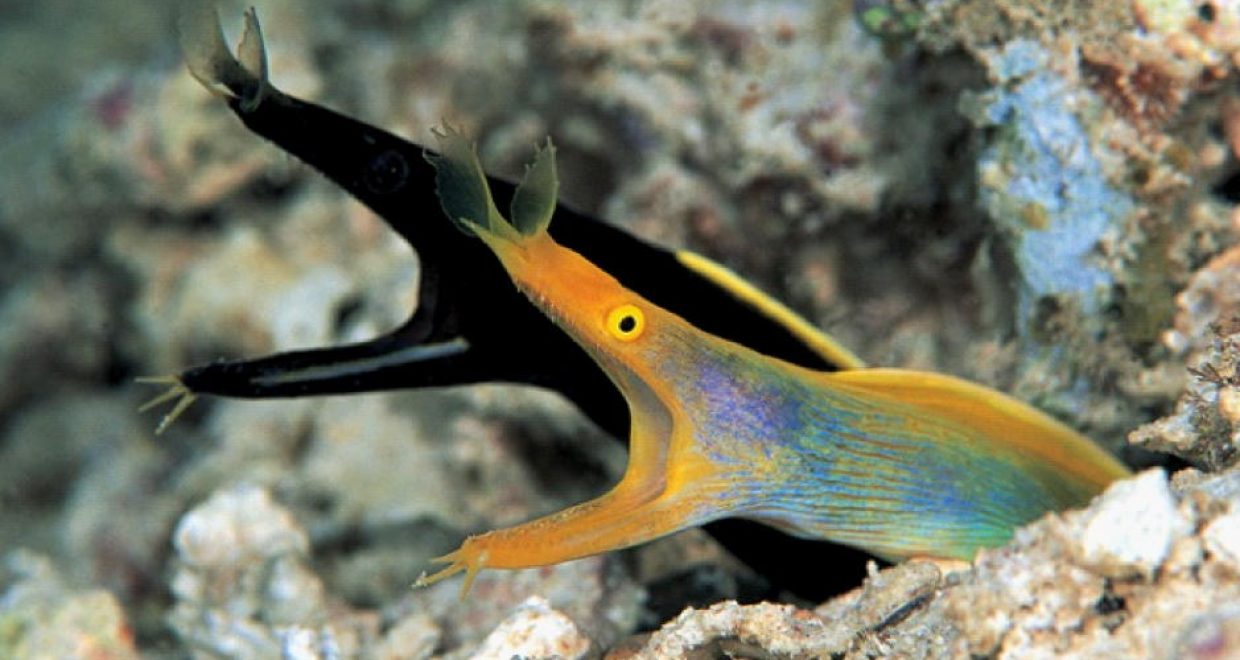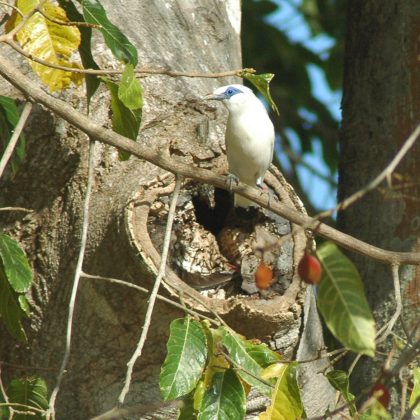Citizen scientists capture beautiful ribbon eel larvae (leptocephali) on film
Leptocephali are the remarkably transparent larvae of eels and their relatives, but they are rarely seen because they mostly live in oceanic waters. Moray eel leptocephali are one of the smaller types of eel larvae (usually less than 90 mm), but recently very large, 300-400 mm (over 1 foot) long, leptocephali have been filmed and photographed in coastal Indonesia at Sangeang Island, Lembeh Strait adjacent to Sulawesi Island, Ambon Island, and Bali (Miller et al. 2013). The similarity of the head and body shapes of these leptocephali with adult ribbon eels, Rhinomuraena quaesita, suggest they are their larvae.
A common eel in the Indo-Pacific, ribbon eels are distinctive for their bright blue or yellow colors, widely opening jaws, and large protruding nostrils. These large leptocephali have not been collected by nets in recent offshore surveys, but they appear to be entering shallow habitats during their metamorphosis into young eels and looking for places to hide when they have been filmed or photographed. A video clip of four of these larvae from different locations associated with the Miller et al. paper can be seen online here.
The video recordings and photographs of these remarkably large leptocephali made by divers from the Netherlands, Turkey, the United States and Japan are some of the best views of live leptocephali in nature that are available so far worldwide. If these larvae can be captured and allowed to transform into eels, it will confirm if they are indeed the unknown larvae of ribbon eels, or DNA samples can be used to match with the adults. The study, published in the journal Marine Biodiversity Records, is a great example of how recreational and professional underwater photographers can contribute to scientific studies of the behaviour and biodiversity of marine organisms in high diversity areas such as Indonesia where gaps in knowledge still exist.
Read the full paper here freely available for 3 weeks









I also had an encounter with an Leptocephalus in Bali, North-west coast in May 2014. Depth was 12 – 15 m. See the video clip in youtube:
Author: monitoursgoe
Title: Leptocephalus Bali 2014
If you need further details, please sen a mail. Regards Chris